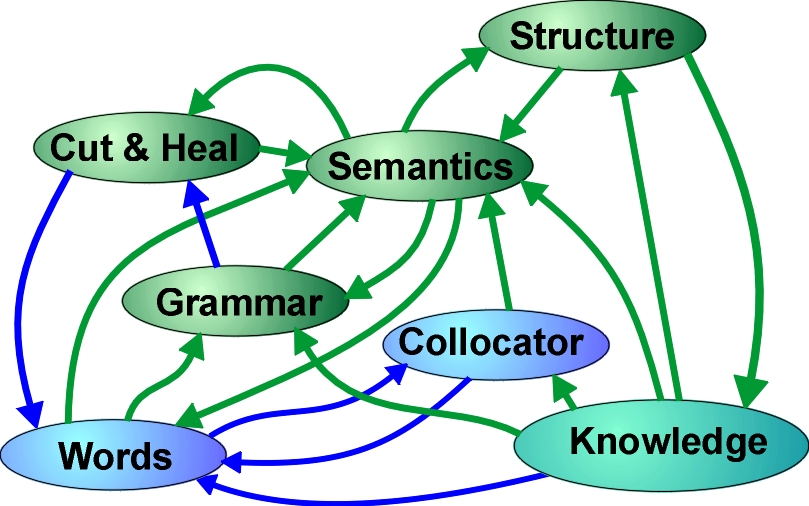
The work on analysis of free text has forced us to examine what are the hallmarks of the ORION paradigm. It became clear that to be successful in high reliability extraction of information from text, many processes would need to proceed synergistically in parallel. The diagram shows some of the EOI processes involved.

Words need to be converted into parts of speech, or 'tags'. Parts of speech are converted into grammatical structure, grammatical structure is converted into semantic structure, and so on. It is not possible to convert words into parts of speech without ambiguity - "near" can be an adjective, a preposition, a verb. Many of these alternatives can be resolved during the building of the grammatical structure. Ambiguities will be found while building the grammatical structure, many of which can be eliminated by starting to build the semantic structure. As the semantic structure begins to produce events, these events can be augmented with the domain knowledge, so potentially we have a thread running backwards and forwards between the part-of-speech tagging and the domain knowledge. What we have are several processes, proceeding in parallel and opportunistically using whatever information becomes available to advance themselves, and in so doing, advancing the processes around them.
This interlinking of processes is also essential if we are to resolve anaphora successfully -the automated text reading system needs to be in the state the writer intended the human reader to be in at every point as it moves through the text, so that the inferences made to resolve anaphora are made on the same basis the human reader would be using.
The text application hardens our resolve to have a system where Connectivity, Activity, Visibility and Extensibility are paramount.
These four elements highlight the differences between the ORION paradigm and expert systems, artificial neural networks, logic programming, Uncle Tom Cobley and all the other paradigms that do not seek to encompass these elements.
A presentation on the Rationale of the Paradigm